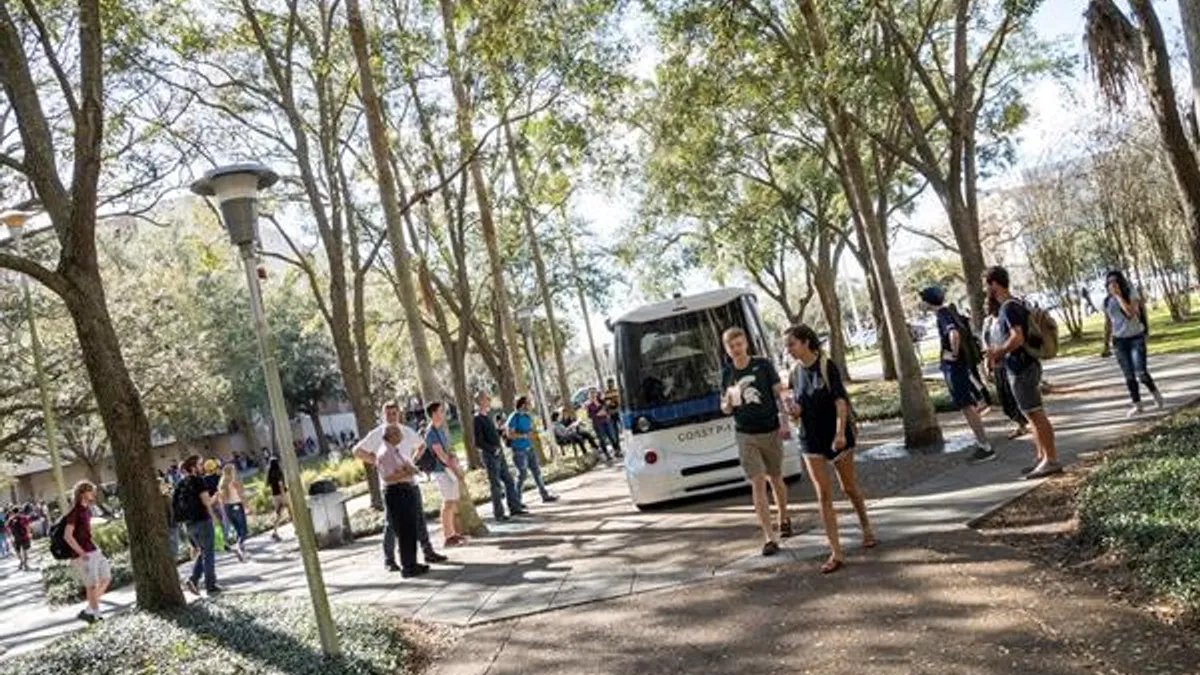Dive Brief:
- The University of South Florida's (USF) Center for Urban Transportation Research (CUTR) and COAST Autonomous are piloting an autonomous shuttle to move students and faculty from the library to a recreation center on campus, according to a press release.
- The pilot uses a bi-directional, electric shuttle designed to operate in pedestrian areas or mixed traffic up to 25 miles per hour. The shuttle can accommodate eight seated passengers and four standing ones, but could carry up to 20 passengers with fewer seats.
- The one-week trial will give researchers insight into people’s reactions and willingness to ride a driverless vehicle, and how the vehicles interact with pedestrians, cyclists and skateboarders.
Dive Insight:
The trial will be yet another test case for autonomous shuttles, which are being piloted in different environments across the country. Cities like Detroit, Las Vegas and Austin, TX are testing autonomous shuttles in downtown areas as a way to connect businesses, transit stops and parking lots. Boston-based Optimus Ride just announced last week that it would provide shuttles for residents of a mixed-use development in Reston, VA, and a community in Florida had even piloted an autonomous school bus before it was halted by federal regulators.
The USF trial will see how the shuttles function on a campus environment, which can often have a different transportation mix than an urban downtown. The shuttle will navigate paths that may be crowded with pedestrians or skateboarders, rather than fitting into slow-speed vehicular traffic. In a statement, Dr. Pei-Sung Lin of USF’s CUTR said that showing how the shuttle works “in such a busy environment” would be an important step.
“Seamless integration between existing and new modes of transportation will likely make for better urban environments,” Lin said.
Universities have also proven to be important test environments for smart cities technologies, since they can almost function as mini-cities themselves. Getting an autonomous shuttle to work in that environment could show how they could function in other confined campuses with a healthy transportation mix.











